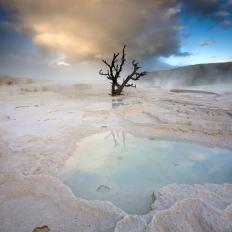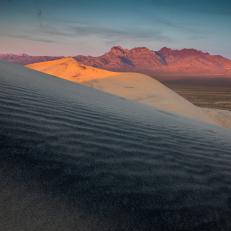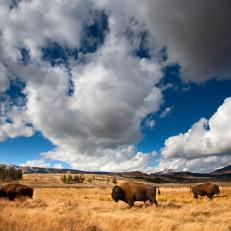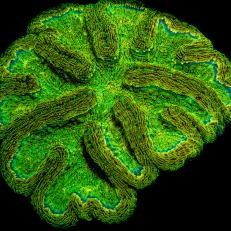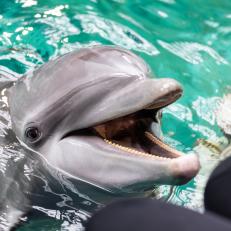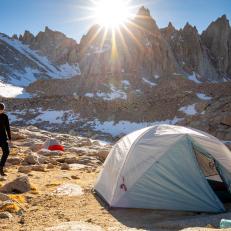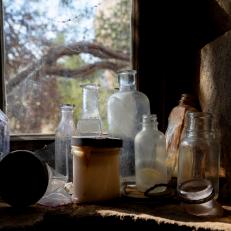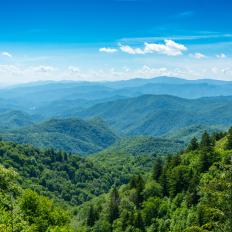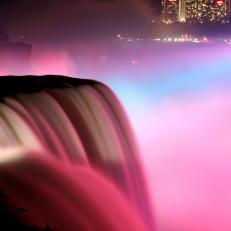The Beauty of Big Bend National Park
Discover why visitors have been coming to Big Bend National Park to experience the mystical hot springs, prehistoric pictographs, and historical ruins of early settlers.
Presented by Travel Texas.
Please review and follow all state and local guidelines while traveling.
August 03, 2020

By:
Ian Shive
Show:
Nature in Focus
Related To:
lessRelated To:
View The Gallery
1 / 17
Nothing says adventure on the road ahead, like the double yellow stripes pointing the way into the Chisos Mountains in Big Bend National Park, Texas. I visited Big Bend over a decade ago while on assignment for a magazine, but the trip was short and I never got a chance to truly explore these mountains. Now that I am back, with plenty of extra time on my hands, seeing the mountains rise up in the distance gets me so excited! Be sure to drive slow, though, no matter how excited you get, as these mountains are home to black bear and mountain lions who may make a quick crossing.
This old, gnarled tree was an obvious choice as a compositional element from my landscape photos of the Chisos Mountains in Big Bend National Park, Texas. I usually seek out unique natural formations, such as this, because they conjure my imagination in an unusual ways. When making this image, I pictured the long roots of the tree like fingers, gripping the rock as tightly as possible, helping this old being ride out the winds and weather that blow through these mountains.
The view atop the Chisos Mountains in Big Bend National Park, Texas. The Chisos cover 40 square miles and are the only mountain range to be encompassed entirely in a national park. As a photographer, they offer unparalleled opportunities to express your creativity, both from above and from below. I made this photograph while laying on my belly, keeping as much of the rocks in the foreground in frame as possible, lining up the opposite mountain within the crevasse in the foreground. I often have ideas of images I want to capture, but much of my approach is trial and error, constantly working the scene with many angles and settings until I feel I've exhausted any and all ideas.
One of the ultimate payoffs of visiting Boquillas Canyon in Big Bend National Park, Texas, is the opportunity to dip in the mystical waters of a natural hot springs. As the stories go, these waters are rumored to have a natural healing property, and while the springs do carry dissolved mineral salts, it's widely believed that the 105 degree Fahrenheit temperatures are what have the most healing effect. For the weary, sunburned traveler, soaking in the springs definitely had a healing effect...of sorts.
As a photographer I try to use different elements in unique ways, adding splashes of color as often as possible. In the desert, that can be a challenge, but in spring, the flowers of this cactus were an obvious choice for me to work with. Ultimately, I liked the composition best when they were slightly out of focus, keeping the viewers eye on the distant river, but still adding much needed vibrancy. Photographed in Big Bend National Park, Texas.
It's hard to believe these prehistoric pictographs in Big Bend National Park, Texas, have been here for thousands of years, painted on by the first people to inhabit the region. Markings like this are unique, and give us a glimpse into a rich and beautiful culture, but unfortunately too many people vandalize these marks, which are becoming more and more rare. Thankfully, many of these ruins are beyond the reach of even the tallest people, so they remain close enough to enjoy and somewhat protected for generations to come.
Prehistoric pictographs, painted by the first people to inhabit the region, Big Bend National Park, Texas. There are two Native American tribes who are known to settled this area, the Jumanos and the Chisos. The mountain range, the Chisos, most likely takes its name from them, and means "ghost" or "spirit," two things you can feel as you walk this canyon reliving the rich and beautiful history of these people.
This is the Livingston House, one of the first ruins you find of the early settlers to this region of Big Bend National Park, Texas. Located in Boquillas Canyon, the house isn't large, but is well situated above the banks of the Rio Grande River and not far down the trail from a mystical, healing hot springs. This is one of the first of many historical ruins in this canyon that struck my imagination and made a great subject matter for me to capture.
Located in Boquillas Canyon, Big Bend National Park, Texas, this old building is what remains of a hotel built by early homesteaders who came to the region seeking the nearby hot springs, and also realizing the potential to attract other visitors to the area. Today, people still flock to this canyon for the hot springs, and there is no hotel to stay at, but the old ruins are a fascinating site along the trail for visitors to check out.
It's believed that the owner of this house, Charles Livingston, who built this in the 1930s, used to hunt the unique geology of the area for gems such as agate. I took this image with the hope of conveying not just the structure itself, but the unique geology of the area, too, which must have captured Mr. Livingston's imagination.
You wouldn't think a fireplace is necessary in the Chihuahuan desert of Big Bend National Park, Texas, but this is the high desert, and temperatures can drop well below freezing in the winter months. When photographing old historic structures, such as this one, I try to imagine what life must have been life for the people who called it home. What were there days like? Their dreams? They must have had plenty as they sat around this fireplace.
This doorway of the Charles Livingston house (c.1930s) caught my eye as a compositional element in Big Bend National Park, Texas. Located not far from the parking lot at the hot springs trailhead, the door almost seems pointlessly absurd with a giant wall and boulder only inches away, though when the house was first built it must have served some utilitarian purpose for the owners. Those stories, though, are lost to time.
While photographing Big Bend National Park, Texas, I covered hundreds of miles a day, often driving back and forth on the same roads, watching as the light and weather changes. As a photographer, stormy weather often means dramatic light and great skies, perfect for making powerful compositions. In the desert, storms don't usually last very long, passing quickly, which makes the wet spring an ideal time to visit (not to mention cooler evening temperatures). This image was photographed on the road leading to Santa Elena Canyon. The striking purple color of the cactus made them an obvious choice for a foreground element.
The landscape of Big Bend National Park, Texas, is a photographers dream, with huge rock spires popping up out of the desert, formed by geological processes millions of years ago. They offer compositional opportunities not found in other national parks. The best part of visiting here, though, is that it's one of the least visited national parks in the country, which means you have plenty of room to stretch out, and put your creativity to the test. The image was captured just inside the park entrance near Terlingua, Texas.
The old stone base around this natural hot springs in Boquillas Canyon, Big Bend National Park, Texas was built in the early 1900s by one of the first homesteaders to visit the area, J.O. Langford. Not much remains of the bathhouse he built, but in dryer seasons when water levels are low, such as when this photo was made, the base of the wall he built is more visible. I often enjoy making images of water features in the evening, when a long exposure allows the textures to soften, conveying the sense of serenity that is second only to an actual soak in the hot springs themselves.
Beyond the natural hot springs of Boquillas Canyon in Big Bend National Park, Texas, the Rio Grande River snakes along the cliffs along the trail to Rio Grande Village. The Rio Grande is a natural border separating Mexico (on the right) from the United States (left). In the distance the Sierra Del Carmen Mountains are visible. During the day, the desert looks almost monochromatic, with neutral tones domination, but as the sun sets, colors and contrast begin to pop, with a range of pastels bouncing off every surface. It's also a lot cooler, which makes longer hikes much easier.
The first homesteader to truly settle in the area in modern times, kicking off a tourism boom thats still alive today, lived here, in what is otherwise just a pile of rocks and a bit of floor. Located on the cliffs above the hot springs in Boquillas Canyon, Big Bend National Park, Texas, this was once the home of J.O. Langford, who came here in the early 1900s seeking a mystical cure from the natural hot springs, but realizing the potential for tourism, too. At least he had taste, because the view looking up the Rio Grand River is stunning...and the soak in the hot springs below is equally amazing.









